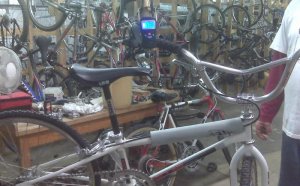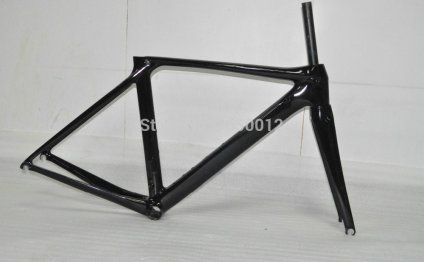
Lightest BMX Bike frame
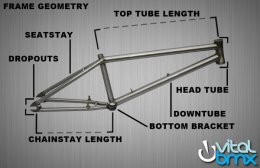
BMX Frame Buyer’s Guide
The frame the most essential choices a rider must make whenever building a new bicycle. It is vital to choose a-frame that will praise your personal style and then resist the stresses of each and every day biking. This informative article describes some of the various variations in frame kinds, geometry, materials, plus.
Types
Rushing Frames – Rushing frames are made with speed, overall performance, and minimal body weight at heart. Simply because they make use of lighter products, they are struggling to endure the greater amount of stressful kinds of riding like road, playground, and sometime trails.
Freestyle Frames – since most road, park, and trails (dust bouncing) structures are designed the same way, and use the same products and sizes, we've grouped all of them into the “freestyle” category. These structures are designed to simply take misuse - whether from grinding, leaping, or falling, they're designed to final.
Cruiser Frames – Cruiser structures are larger than typical BMX structures. They have been built to use 24” tires. These structures are made for rushing or freestyle usage.
Geometry
You should understand the various geometries and styles of a frame before you make an acquisition. The drawing below outlines the main geometries and framework components.
Head Tube Angle – The angle of a frame’s mind pipe affects how the cycle responds regarding both steering as well as the rider’s place on the bicycle. Look at drawing below to obtain a grasp of just how it's assessed.
A “steeper” head tube position (greater figures; those in the 75-75.5 level range) usually positions a driver throughout the front end of the cycle, whilst sweeping the base of the hand inward towards the framework. This makes technology tips and nostrils guides much easier. Bicycles with high head perspectives also provide smaller wheelbases.
A “shallower” mind pipe angle (lower numbers; those who work in the 74-74.5 degree range) make the frame feel much more steady at speed plus turns, which is the reason why tracks and dust bouncing frames generally have actually a shallower head pipe angles.
Seat Tube Angle – this is actually the position the frame’s chair pipe sweeps back, from the back end associated with bike. This position affects the position of the seat while the amount of the frame’s top pipe. A shallower direction implies the seat pipe sits further back and the most truly effective tube’s length increases. Structures are created with chair tube sides ranging from 69-71.5 degrees, with 69 degrees becoming the shallower option.
Materials
With exception to aluminum and carbon fibre race frames, BMX frames are most commonly made of chromoly. Even though many businesses call their chromoly tubing by different brands, almost all of the chromoly utilized can be grouped into the 4130 and 4140 people. These kind of metallic offer a tremendously large energy to load proportion, making them well suited for used in BMX structures.
Chromoly structures being heat-treated have gone through a procedure that hardens the steel. Frames being heat-treated are often more resistant to flexing and cracking. This will be a good choice for strengthening a frame without incorporating body weight.
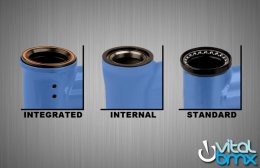 Aluminum structures and carbon fiber frames are intended for racing just. If you’re a less heavy driver that really needs body weight cost savings for better performance, plus don't plan to ride the bicycle anywhere but the racetrack, these materials may be the perfect choice for you.
Aluminum structures and carbon fiber frames are intended for racing just. If you’re a less heavy driver that really needs body weight cost savings for better performance, plus don't plan to ride the bicycle anywhere but the racetrack, these materials may be the perfect choice for you.
Mind Tubes
The head tube is the percentage of a-frame the fork’s steerer tube passes through. There are numerous variations of head pipes available in BMX frames today. They could be divided into three categories with respect to the bearing methods they use.
Incorporated Head Tubes – Built-in mind pipes utilize sealed cartridge bearings which are pushed directly into the headtube of the framework with no need for extra bearing cups or shims. This method is the most popular type of headset in aftermarket BMX frames.
Internal Head Tubes – Internal mind tubes, additionally often referred to as “semi-integrated head pipes, ” use a press-fit system that operates comparable to a built-in headset design. The real difference is that inner headset bearings never rest right in the frame, but rather use yet another shim or bearing glass in the headtube to put the bearings.
Traditional Head Tubes – Standard head pipes are located in older frames and total bicycles. This mind tube uses bearing cups which can be pushed to the top and base associated with the frame, in addition to bearings sleep outside of the headtube.
Bottom Brackets
The underside bracket, generally referred to as the “BB, ” is situated inside the part of a-frame that crankset’s spindle passes through. This portion of the frame is named a bottom bracket shell, therefore’s dimensions determines the type of base bracket the framework will use. There are lots of variants of bottom brackets which use different bearing styles. These can be broken down into four groups: United states, Mid, Spanish, and Euro.
American Bottom Brackets – United states base brackets had been more widespread during the early times of BMX. They use a bearing set that rests inside cups being then pushed to the framework. The downside to United states bottom brackets is they are huge and contain unnecessary weight. Additionally they simply take a considerable amount of force to hit the cups into the framework. They usually are found on bikes with single-piece cranks.
Mid Bottom Brackets – Mid base brackets use the same bearings that US bottom brackets utilize, but the cups tend to be entirely taken off the equation. The bearings tend to be pressed directly into the framework, permitting a less complicated setup and a reduced weight. Because the bearings are the same dimensions as an American base bracket, there's no difference between power involving the two types. This kind of bottom bracket is considered the most common.
Spanish Bottom Brackets – Spanish bottom brackets additionally make use of bearings that click directly into the framework. Spanish base brackets use a bearing with a smaller sized diameter than a Mid bottom bracket, consequently a smaller bottom bracket layer and less body weight.
European Bottom Brackets – European base brackets are just typical to competition structures. European bottom brackets make use of smaller bearings that sit inside a cup that is threaded straight into the framework.
Dropouts
The dropout may be the part of the framework that back wheel’s axle slides into. Dropouts are available in a few sizes and designs that affect the strength and rigidity of a bike.
14mm – 14mm dropouts utilize a thick axle this is certainly made to endure probably the most fatigue and punishment. It is strongly recommended that folks that ride park, dust, or road run 14mm straight back axles to be able to use the force that is included with these varieties of driving.
3/8” (10mm) – 3/8” dropouts were created for smaller, 3/8” axles. Frames that use this size are often made for rushing and tracks driving. A 3/8” axle is much more susceptible to bending, which should be considered before purchasing this form of frame.
YOU MIGHT ALSO LIKE
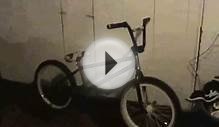
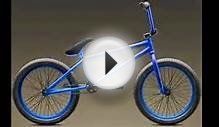
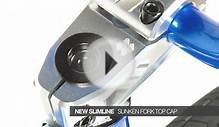
Share this Post
Related posts
Lightest BMX Bike in the world
Building something is time and effort. I’ve been at it for over a-year whilst still being have actually most tips to enhance…
Read MoreLightest BMX Bikes
If you should be not used to the whole BMX experience, you probably have a huge amount of concerns. Like, how can I understand…
Read More

